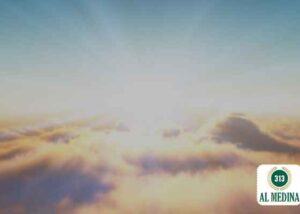Some people say that Masjid al-Aqsa was not the first Qiblah but the second. Is this true?
Quran
Hadith
Islamic Text
بِسْمِ اللَّهِ الرَّحْمَنِ الرَّحِيمِ
In the Name of Allah Most Merciful Most Kind
Short Answer
Some scholars of Ahl al-Sunnah differ as to if it was Masjid al-Aqsa being the first or second Qiblah. Many said it was Masjid al-Aqsa. However, other scholars said the Qiblah was initially the Ka’bah, then Masjid al-Aqsa, and then changed back. This view would mean that Masjid al-Aqsa was the second Qiblah.
Explanation
عُمَرَ بْنَ الْخَطَّابِ يَقُولُ لِكَعْبٍ: أَيْنَ تُرَى أَنْ أُصَلِّيَ؟ فَقَالَ: إِنْ أَخَذْتَ عَنِّي صَلَّيْتَ خَلْفَ الصَّخْرَةِ، فَكَانَتِ الْقُدْسُ كُلُّهَا بَيْنَ يَدَيْكَ، فَقَالَ عُمَرُ: ضَاهَيْتَ الْيَهُودِيَّةَ، لَا، وَلَكِنْ أُصَلِّي حَيْثُ صَلَّى رَسُولُ اللهِ صَلَّى اللهُ عَلَيْهِ وَسَلَّمَ، فَتَقَدَّمَ إِلَى الْقِبْلَةِ فَصَلَّى، ثُمَّ جَاءَ فَبَسَطَ رِدَاءَهُ فَكَنَسَ الْكُنَاسَةَ فِي رِدَائِهِ، وَكَنَسَ النَّاسُ
(Sayidina) Umar bin al-Khattab said to Ka`b: Where do you think I should pray? He said: If you take my view, you will pray behind the rock. Thus, all of al-Quds will be in front of you. (Sayidina) Umar said: You have resembled Judaism. Rather I shall pray where the Messenger of Allah ﷺ prayed. He went forward towards the Qiblah and prayed. Then he returned and spread his upper garment and swept the garbage into it. The people swept it too. (Musnad Ahmad, 261).
وهذا حديث حسن الإسناد، اختاره الحافظ الضياء في كتابه. (مسند الفاروق أمير المؤمنين أبي حفص عمر بن الخطاب)
This Hadith has a Hasan (sound) chain of transmission. It was selected by al-Hafiz al-Diya for his book. (Imam Abu al-Fida bin Katheer, Musnad al-Faruq).
Proof from Sayidina Umar
The Hadith narration above is Hasan (authentic) according to Imam Ibn Katheer. It has been used as a prove to substantiate the fact that the initial Qiblah was the Holy Ka’bah. This view would mean that: the Ka’bah was the first Qiblah; then the rock at Masjid al-Aqsa; and then it changed back to the Ka’bah.
وقد روى عن عمر ـ رضى الله عنه ـ أنه صلى فى محراب داود، وأما الصخرة فلم يصل عندها عمر ـ رضى الله عنه ـ ولا الصحابة، ولا كان على عهد الخلفاء الراشدين عليها قبة بل كانت مكشوفة فى خلافة عمر وعثمان وعلى ومعاوية. (إيثارة الترغيب والتشويق إلى المساجد الثلاثة والبيت العتيق)
It was narrated that Umar (May Allah Most High be pleased with him) prayed in the prayer niche of Dawood (peace be upon him). As for the rock, neither Umar (May Allah Most High be pleased with him) nor the companions (Sahabah) prayed there. There was no dome over it during the time of the Rightly Guided Caliphs. Rather it was uncovered during the caliphate of Umar, Uthman, Ali and Muawiyah. (Muhammad bin Ishaq al-Khawarazmi 827H, Itharatu al-Targheeb).
In the Hadith, Sayidina Umar prayed with the rock behind him. He also mentioned that the Prophet ﷺ prayed there. This makes it clear that the Qiblah at the time of the Prophet ﷺ visiting Masjid al-Aqsa was not the rock. Rather, it was the Ka’bah.
The Prophet ﷺ visited Masjid al-Aqsa on the night of al-Isra and Miraj which took place before the migration. Whereas the changing of the Qiblah from Bayt al-Maqdis to the Ka’bah was after migration. This necessitates that the Qiblah was the Ka’bah at the time of the Prophet’s ﷺ visit. As such, the Qiblah must have changed and then returned back to the Holy Ka’bah.
Narration of Ibn Jurayj
قَالَ ابْنُ جُرَيْجٍ صَلَّى رَسُولُ اللَّهِ صَلَّى اللهُ عَلَيْهِ وَسَلَّمَ أَوَّلَ مَا صَلَّى إِلَى الْكَعْبَةِ، ثُمَّ صُرِفَ إِلَى بَيْتِ الْمَقْدِسِ، فَصَلَّتِ الْأَنْصَارُ نَحْوَ بَيْتِ الْمَقْدِسِ قَبْلَ قُدُومِهِ ثَلَاثَ حِجَجٍ، وَصَلَّى بَعْدَ قُدُومِهِ سِتَّةَ عَشَرَ شَهْرًا، ثُمَّ وَلَّاهُ اللَّهُ جَلَّ ثَنَاؤُهُ إِلَى الْكَعْبَةِ. (جامع البيان عن تأويل آي القرآن)
Ibn Jurayj said: The Messenger of Allah ﷺ initially prayed facing the Ka’bah. Then he was turned to Bayt al-Maqdis (Masjid al-Aqsa). The Ansar prayed facing the Bayt al-Maqdis for three years before his ﷺ arrival. When he ﷺ arrived, he prayed for sixteen months, then Allah (Most High) directed him to the Ka’bah. (Jami al-Bayaan, Imam Abu Ja’far al-Tabari).
In the narration above, we find further support for the position that the Qiblah changed twice. In this case it is not necessary to deduce it. Rather, it is explicitly mentioned. However, many scholars disagreed with this view. Likewise, Imam Ibn Hajr was unconvinced since this would necessitate abrogation occurring twice.
The other opinion
الْعُلَمَاء اخْتَلَفُوا فِي الْجِهَةِ الَّتِي كَانَ النَّبِيُّ صَلَّى اللَّهُ عَلَيْهِ وَسَلَّمَ يَتَوَجَّهُ إِلَيْهَا للصلاه وَهُوَ بِمَكَّة فَقَالَ بن عَبَّاسٍ وَغَيْرُهُ كَانَ يُصَلِّي إِلَى بَيْتِ الْمَقْدِسِ لَكِنَّهُ لَا يَسْتَدْبِرُ الْكَعْبَةَ بَلْ يَجْعَلُهَا بَيْنَهُ وَبَيْنَ بَيْتِ الْمَقْدِسِ وَأَطْلَقَ آخَرُونَ أَنَّهُ كَانَ يُصَلِّي إِلَى بَيْتِ الْمَقْدِسِ وَقَالَ آخَرُونَ كَانَ يُصَلِّي إِلَى الْكَعْبَةَ فَلَمَّا تَحَوَّلَ إِلَى الْمَدِينَةِ اسْتَقْبَلَ بَيْتَ الْمَقْدِسِ وَهَذَا ضَعِيفٌ وَيَلْزَمُ مِنْهُ دَعْوَى النَّسْخِ مَرَّتَيْنِ وَالْأَوَّلُ أَصَحُّ لِأَنَّهُ يَجْمَعُ بَيْنَ الْقَوْلَيْنِ. (فتح الباري شرح صحيح البخاري)
The scholars disagreed regarding the direction the Prophet ﷺ faced for prayer whilst in Mecca. Ibn Abbas and others said that he ﷺ used to pray facing Bayt al-Maqdis. However, he ﷺ did not turn away from the Ka’bah, rather he placed it between him and Bayt al-Maqdis. Others said that he was praying towards Bayt al-Maqdis. Yet others said, he ﷺ was praying towards the Ka’bah. But when he ﷺ went to al-Madinah he faced Bayt al-Maqdis. This is weak because it necessitates abrogation twice. The first (opinion) is the strongest since it reconciles both views. (Imam Ahmad bin Ali bin Hajr al-Asqalani, Fath al-Baari).
We see in the Nass (text) above, that Imam Ibn Hajr recognises a difference of opinion regarding the issue of the shifting of the Qiblah. However, he deems the view that it was initially the Ka’bah and then changed to Bayt al-Maqdis to be weak. His contention is that it would require abrogation to occur twice. Although twofold abrogation is not unheard of in the Shariah, it is unquestionably less common that singular abrogation.
Reconciliation
عَنِ ابْنِ عَبَّاسٍ، قَالَ: كَانَ رَسُولُ اللهِ صَلَّى اللهُ عَلَيْهِ وَسَلَّمَ يُصَلِّي وَهُوَ بِمَكَّةَ نَحْوَ بَيْتِ الْمَقْدِسِ، وَالْكَعْبَةُ بَيْنَ يَدَيْهِ، وَبَعْدَ مَا هَاجَرَ إِلَى الْمَدِينَةِ سِتَّةَ عَشَرَ شَهْرًا، ثُمَّ صُرِفَ إِلَى الْكَعْبَةِ
(Sayidina) Ibn Abbas said: The Messenger of Allah ﷺ used to pray facing Bayt al-Maqdis with the Ka’bah in front of him ﷺ, while he was in Mecca. And after he ﷺ migrated to Medina for sixteen months. Then he was turned to the Ka’bah. (Musnad Ahmad 2991, Sahih).
There is clearly a difference of opinion on the issue of the first Qiblah in Islam. However, some scholars attempted to reconcile the narrations. They said the first Qiblah was Masjid al-Aqsa, but the Prophet ﷺ used to face Jerusalem in such a manner that the Ka’bah was also in front of him. Thus he would end up facing both. The narration above is used as proof for this.
وقد اختلف الناس هل كان النبي صَلَّى اللهُ عَلَيْهِ وَسَلَّمَ بمكة قبل هجرته يصلي إلى بيت المقدس أو إلى الكعبة؟ فروى عن ابن عباس: إنه كان يصلي بمكة نحو بيت المقدس والكعبة بين يديه. خرجه الإمام أحمد. وقال ابن جريج: صلى أول ما صلى إلى الكعبة، ثم صرف إلى بيت المقدس وهو بمكة. (فتح الباري شرح صحيح البخاري)
People disagreed, in Mecca did the Prophet ﷺ pray facing Bayt al-Maqdis or the Ka’bah before his migration? It was narrated from Ibn Abbas that, in Mecca he ﷺ used to pray facing Bayt al-Maqdis, with the Kaaba in front of him. It was narrated by Imam Ahmad. Ibn Jurayj said: While he was in Mecca, he first prayed facing the Kaaba, then he turned to Bayt al-Maqdis. (Imam Ibn Rajab al-Hanbali, Fath al-Baari Sharh Sahih al-Bukhari).
Although the Nass above represents a commendable attempt at reconciliation, it does not address the Hadith of Sayidina Umar. Thus, a contention would remain. If the Qiblah was Masjid al-Aqsa, and more specifically the rock present there, then why did the Prophet ﷺ pray with it behind him?
Conclusion
Although it is an interesting discussion as to whether Masjid al-Aqsa was the first or second Qiblah, it is not something that Muslims should focus upon. Clearly there is a difference of opinion amongst great scholars of Ahl al-Sunnah. The difference should be respected, and individuals are at liberty to follow the view they are more convinced of. People should focus their time and energy on more pressing matters.
And Allah Most High Knows Best.
–Answered by Shaykh Noorud-deen Rashid (16.02.24)



